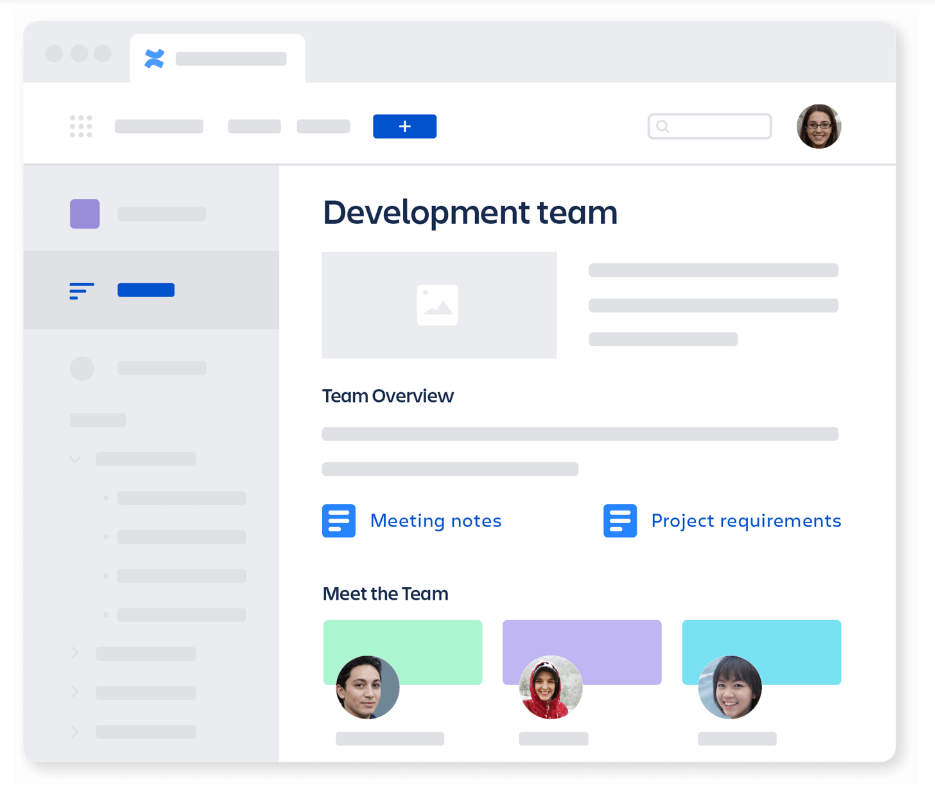How to design the architecture in Confluence to suit your internal organisation
Confluence and Jira are a perfect combination that transforms the way teams collaborate on their projects.
Some of the benefits are:
- Eliminates the need for shared folders and drives and streamlines the search for information. Everything is organised in one place.
- Information is more accessible, always available and available to everyone.
- It encourages collaboration and tracking of issues.
- It increases efficiency.

Architectural design in Confluence
One of the first premises for this combination to be optimal is to first design the architecture in Confluence.
But this strategy has to be planned and implemented in a different way according to the needs and specificities of each company.
Today we present four examples of initial scenarios and an architecture recommendation for each.
Scenario 1
The company is organised by areas, which are divided into different departments, which in turn are divided into different teams.
Recommended architecture: have an organisation space that is private and visible to all, where relevant information and links to the spaces of the different areas are shared.
Advantages: each department can manage information independently, according to its own procedures.
Disadvantages: it is not possible to standardise spaces per department, as we could organise information in completely different ways, and therefore if we need to collect information from departmental spaces at area level, there is a risk of duplicating information.
We can avoid this if each department is organised differently and we share at least one standard page of general information with the areas.
Scenario 2
The company is organised by areas, which are divided into different teams. The different areas work together for their operational tasks and share information.
Recommended architecture: have one private space per area with relevant coordination and area management information. Or have a private space per project/client, dedicated teams, operational information in Jira.
Advantages: all project/customer information is in the appropriate room, making it easier to create, maintain and search for related information.
Disadvantages: there is more complexity in maintaining standardised project/customer spaces. It will be necessary to use templates to create these spaces so that they all follow the same structure.
Scenario 3
A company organised around teams. Teams perform operational tasks on a recurring basis.
Recommended architecture: a single private space for the organisation, where each team has its own page.
Benefits: all information related to the organisation’s knowledge base is in the same space, making it easy to share and maintain between teams.
The architecture map is simple and easy to understand for all stakeholders with any profile, as there is only one space where all the information is organised.
Disadvantages: a procedure must be implemented for managing the knowledge base documentation based on tags to facilitate searching, since it is located in a single space.
Within the same space it is not possible to use pages with the same name, it is necessary to specify a page nomenclature that helps to organise the information within the space.
Scenario 4
A company in which the different areas have very different functions and do not cooperate for their operational tasks, but share information.
Recommended architecture: it will be very useful to have one private room per area, with a visible part shared with the organisation and accessible through the organisation’s room link, and a private part for the area’s departments.
Advantages: it facilitates collaboration between teams in the same department and allows the implementation of guidelines for the creation and maintenance of information based on the procedures of the department to which they belong.
Disadvantages: it is more complex to configure and maintain permissions to allow visibility of pages shared between different areas and different departments (permissions at page level).
Carmen Climent and Marc Cano February 14th, 2023